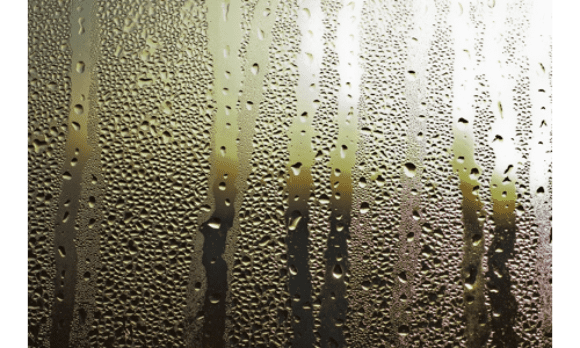While it might be hard to believe, the air that surrounds us contains water. This is in the form of a gas known as water vapor. Humidity is a measurement given to the amount of water vapor contained in the air. The levels of humidity change with the seasons throughout the year. In summer, the air is warmer and can contain larger amounts of water vapor. This causes humidity levels to increase. Whereas, in winter, humidity is often lower because the cold air holds less water vapor. If the level of humidity is too high or too low, it can make your home extremely uncomfortable to spend time in. Humidity can cause damage to the interior of your home by warping your furniture, making it unsafe to sit on or use. It can also be damaging to your home’s by weakening the walls.
There is also the health complications that come with fluctuating humidity. Too high and your home will be filled with mold, which can cause coughing, wheezing, and irritation. Too low and your family will become more susceptible to colds and respiratory infections. If you have young children or live with elderly parents, they will be more at risk. This is why it’s paramount that all homeowners prioritize maintaining a healthy level of humidity in their homes. Installing an HVAC unit can help you maintain both humidity levels and temperature by removing excess moisture. This can make your home feel warmer during cold weather and cooler during hot weather. However, this too can be affected if the humidity in your home is too high or low. If too much moisture enters your unit, it can cause mold and mildew to develop. This can also lower the air quality, making it unhealthy to breathe. It could also mean it has to work harder, which can increase your utility bills.
To keep your HVAC unit working efficiently and to improve the air quality, you need to know what the most comfortable humidity level is. This can vary depending on your family’s personal preferences and lifestyle. But generally speaking, it’s recommended that you keep your home’s humidity levels between 30 and 55%. Ideally, you should try to aim for 45% as this can keep your home the most comfortable temperature. Maintaining this level can also help you to avoid the health and safety issues caused by fluctuating humidity. Your HVAC unit will be able to continue functioning sufficiently at the temperature too.
Measure Your Humidity Levels
To help you achieve an optimal humidity level in your home, you need to firstly discover how humid your home is. This will give you a clear indication of whether you need to increase or decrease your humidity levels to reach a comfortable level. You can do this by using a digital hygrometer. These are inexpensive devices which you can find online or from most reputable home improvement stores. The hygrometer can provide you with data that shows both the temperature and percentage of humidity in a particular room. It’s worthwhile to use your hygrometer throughout your home to get as many readings as you can.
If you don’t want to buy a hygrometer, you could see if your air conditioning provider can measure the level of humidity for you. While not all providers offer this service, many do, and it can help you get an accurate humidity reading. It can also give them a chance to see whether your HVAC unit has started to be affected by the humidity. If the humidity is considerably higher or lower than the recommended 45%, try not to panic. There are things you can do that will alter the reading and help it reach a comfortable and healthy level.
Dealing With Low Humidity Levels
If you discover that your home has a humidity level that is too low, it’s likely that your air is dry. This can be caused by a variety of different factors. Homes that are old and aren’t as energy efficient as they could be are often susceptible to low humidity. So if you live in an older home, this could be the reason behind your humidity issues. You could also live in a place that has a typically colder climate, where the air can’t hold much water vapor. If you took your humidity readings during the winter, this could be another reason why they are lower than they should be. Dry air caused by low humidity doesn’t contain a lot of moisture. This means you more likely to catch a cold, have dry skin and get dry mouth regularly. It can also cause floorboards to shrink and damage wooden furniture. None of these outcomes are ideal when you are trying to enjoy your home.
The most effective way of increasing your low humidity levels is by buying a humidifier. These appliances put additional moisture back into the air to make it feel less dry. This then increases the humidity levels to a healthier and more comfortable level. Each type of humidifier will perform this function in different ways. For instance, an evaporative humidifier absorbs moisture by passing air through a wick filter. A fan is then used to push and circulate this newly moisturized air around your home. Talk to a humidifier expert to help you find the best model possible to suit your home and lifestyle.
Dealing With High Humidity Levels
Having high levels of humidity in your home can also come with its own unique problems and complications. The increased moisture in the air can cause staining on walls and ceiling, as well as peeling paint. Homes with high levels of humidity have also been known to develop mold and rot on the interior and exterior. Cockroaches and termites, who love humid conditions, could start to breed in your home too. High humidity can also have an adverse impact on your’s and your family’s health too. Fainting, heat stroke, and heat exhaustion are all more likely to occur when your home is too hot and humid. These conditions are all potentially life-threatening, particularly to babies and elderly people.
High humidity is generally caused by high temperatures in summer. But homes with extensive energy efficient measure can also be susceptible too. This is because the efforts made to prevent the loss of energy stops moisture from escaping too. While your air conditioner can assist you with lowering the humidity levels in your home, it won’t be able to by itself. This is because this isn’t it’s primary function. So you will need to buy a dehumidifier too to help you keep your humidity levels between 30 and 55%. Dehumidifiers are similar to air conditioners, but they have both a hot and cold coil. It uses a fan to pull in air from your home which then passes over the cold coils. This removes the excess moisture by reducing the temperature. The air is then reheated by the hot coils and redistributed back into your home. For the most effective results, you need to remember to empty the collected water regularly.
Now you know how to achieve the most comfortable humidity level, you can take the necessary steps to achieving it. It can take some time to get the balance right to create a healthy humidity level. So don’t be discouraged if you don’t achieve it straight away. But if you do continue to struggle, contact an air conditioning expert. They will be able to service your air conditioning unit, while also recommending how to maintain your home’s humidity levels. Remember that a comfortable humidity level needs to be maintained all year round and not just in summer.

